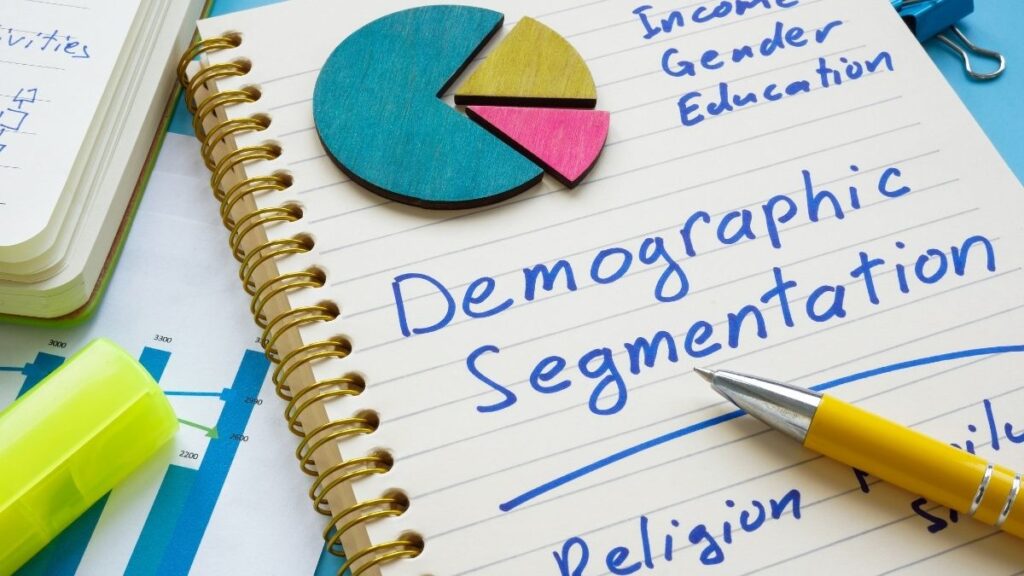
For millions of Americans approaching retirement, the future of Social Security is a source of persistent anxiety, fueled by headlines that often suggest the program is on the verge of collapse. The reality, however, is more nuanced and requires a clear-eyed understanding of the system’s mechanics.
The core issue centers on the projected “depletion” of the Old-Age and Survivors Insurance (OASI) Trust Fund’s reserves. This is the primary fund that pays retirement benefits.
According to the 2025 Social Security Trustees Report, these reserves are forecast to be exhausted in 2033. This event does not mean benefits will cease; rather, it triggers a legal requirement for the Social Security Administration (SSA) to align its benefit payments with incoming payroll tax revenues.
The Actuary’s Ledger: Deconstructing the 2033 Projection
To effectively plan for the future of Social Security, it is crucial to first understand the financial mechanics of the system and the specific pressures leading to the projected 2033 shortfall.
This is not a sudden crisis but the result of decades-long trends that are now reaching a critical inflection point.
1.1 The Mechanics of the Trust Funds: A Pay-As-You-Go System with a Reserve Cushion

At its core, Social Security operates as a pay-as-you-go system, where payroll tax contributions from today’s workers and their employers are used to pay the benefits of current retirees and other beneficiaries.
This stream of revenue is supplemented by two legally distinct trust funds: the Old-Age and Survivors Insurance (OASI) Trust Fund for retirement and survivor benefits, and the Disability Insurance (DI) Trust Fund for disability benefits.
The current solvency challenge is specific to the larger OASI fund. The 2025 Trustees Report projects that the OASI fund’s reserves will be depleted in 2033. In contrast, the DI fund is projected to remain solvent for the next 75 years.
While the two funds are sometimes discussed on a combined basis (OASDI), they are separate legal entities. Combining them to use DI surpluses to cover OASI deficits would require an act of Congress. Therefore, for planning purposes, the 2033 OASI depletion date is the legally relevant and “action-forcing” deadline.
1.2 The Drivers of the Shortfall: A Demographic and Economic Mismatch

Several key factors are driving the long-term shortfall:
The Declining Worker-to-Beneficiary Ratio: This is the primary structural challenge. In 1960, there were more than five workers paying into Social Security for every one beneficiary drawing benefits. By 2024, that ratio has fallen to just three-to-one and is projected to decline to less than 2.5-to-one by mid-century.
“Peak 65” and the Baby Boomer Retirement Wave: The demographic pressure is currently at its most acute. The period from 2024 to 2027 has been dubbed “Peak 65,” a historic surge in which more than 4.1 million Americans are turning 65 each year, the largest wave of retirements in U.S. history.
Actuarial Assumptions: The Trustees’ projections are based on a set of “intermediate” assumptions about the future. Recent updates to these assumptions have worsened the long-term outlook. The assumed ultimate total fertility rate (TFR) has been revised downward to 1.9 children per woman, from 2.0 previously, signaling a smaller future workforce to pay taxes.
Legislative Actions: Far from addressing the shortfall, recent congressional action has exacerbated it. The passage of the “Social Security Fairness Act,” for example, is projected to add nearly $200 billion to the program’s shortfall over the next 10 years alone.
This history demonstrates that political priorities can often run counter to ensuring long-term fiscal solvency, creating a significant credibility gap for those who expect a legislative fix.
1.3 Defining “Depletion”: What the Law Mandates
The term “depletion” is critical to understand. It does not mean the program is out of money. It means the reserve cushion held in the OASI Trust Fund has been fully used. The Social Security Act legally prohibits the payment of benefits in excess of the funds available from ongoing revenues.
Once the trust fund reserves are depleted, the SSA’s authority to pay benefits is limited to the amount of revenue collected in real-time from payroll taxes, income taxes on benefits, and interest. This legal constraint is the mechanism that forces an automatic reduction in benefit payments to match the level of incoming funds.
1.4 Quantifying the “Benefit Cliff”: The 23% Reduction

Based on the projections in the 2025 Trustees Report, upon the depletion of the OASI trust fund in 2033, continuing program income will be sufficient to pay only 77% of scheduled benefits. This will result in an immediate and automatic across-the-board benefit cut of 23% for every single retiree, regardless of their age, income, or need.
While some analyses based on slightly different assumptions cite figures ranging from 21% to 24%, the consensus is a reduction of roughly one-quarter of one’s expected benefit.
It is essential to recognize that this cut is the default outcome under current law. It will occur without any new legislation from Congress; in fact, it is congressional inaction that guarantees this result.
Your Personal Timeline: Navigating from Age 55 to the “Benefit Cliff”
The systemic issues facing Social Security are not abstract; they intersect directly with the personal financial timeline of today’s 55-year-old. Mapping key milestones against the program’s projected changes reveals a series of critical decision points that will define the retirement landscape for this cohort.
2.1 Mapping Your Key Milestones (2025-2037)
Your Retirement Timeline!
💰 Age 55 (Year 2025)
“Rule of 55” 401(k) access if you leave your job. Plus, HSA catch-up contributions begin!
📈 Age 60 (Year 2030)
Unlock new 401(k) “Super Catch-Up” contributions (SECURE 2.0 Act).
🏁 Age 62 (Year 2032)
First chance to claim Social Security, but it’s at a reduced rate (70% of full benefit).
⚠️ Age 63 (Year 2033)
Heads up! Potential OASI Trust Fund depletion. Benefits *could* be cut by ~23% under current law.
✅ Age 67 (Year 2037)
Full Retirement Age (FRA)! You are now eligible for 100% of your Social Security benefits.
🏆 Age 70 (Year 2040)
Max payout! Your delayed credits stop, locking in your highest possible benefit (124% of PIA).
For an individual born in 1970, turning 55 in 2025, the next 15 years are punctuated by significant financial and retirement-related events. Understanding this timeline is the first step toward proactive planning.
2.2 The Critical Dilemma at Age 63: The Intersection of Personal Choice and Systemic Change

The year 2033 places this age cohort in a uniquely challenging position. At age 63, they will be in the midst of making their own claiming decisions just as the entire system’s benefit formula is legislatively mandated to change.
Those who choose to claim benefits at their first eligibility at age 62 in 2032 will receive just one year of payments under the current formula. In 2033, their already-reduced benefit would be cut by an additional 23%. For those who plan to wait, they will witness the baseline for their future benefits being permanently lowered before they ever receive a check.
Their future benefit at Full Retirement Age (FRA) or age 70 will be calculated from a new, diminished starting point. The “benefit cliff” is therefore not a future problem to be dealt with in retirement; it is an active variable that must be incorporated into planning models today.
2.3 Modeling the Financial Impact: A Tale of Three Scenarios

To quantify the impact, consider a hypothetical worker born in 1970 with a projected FRA benefit of $3,000 per month in today’s dollars. The 23% benefit cut fundamentally alters the outcome of their claiming decision.
Scenario 1: Claiming at Age 62. Under the current formula, their benefit would be reduced by 30% to $2,100 per month (70% of $3,000). After the 23% cut in 2033, this monthly payment would fall to just $1,617 ($2,100 x 0.77). This represents a total reduction of nearly 46% from their original full benefit.
Scenario 2: Claiming at FRA (Age 67). The 23% cut reduces the foundational Primary Insurance Amount (PIA). The original $3,000 benefit is slashed to a new baseline of $2,310 ($3,000 x 0.77). This becomes the new 100% benefit they are entitled to at their FRA.
Scenario 3: Claiming at Age 70. The powerful delayed retirement credits, which increase the benefit by 24% over FRA, are applied to the new, reduced PIA. The monthly benefit would be $2,864 ($2,310 x 1.24), a stark contrast to the $3,720 ($3,000 x 1.24) they might have planned for under the current formula.
This analysis reveals how the traditional “break-even” calculation for when to claim Social Security is fundamentally altered.
Table 2: Projected Social Security Benefit Reduction in 2033 (Illustrative Example)
(Based on a worker with a scheduled $3,000/month benefit at Full Retirement Age)
| Claiming Age | Scheduled Monthly Benefit (Pre-Cut) | Monthly Benefit (Post-23% Cut in 2033) | Percentage of Original Full Benefit |
| 62 | $2,100 | $1,617 | 53.9% |
| 67 (FRA) | $3,000 | $2,310 | 77.0% |
| 70 | $3,720 | $2,864 | 95.5% |
The Bridge Years (Ages 55-62): A Proactive Financial Fortification Plan
The years between age 55 and the first eligibility for Social Security at age 62 represent the last and best opportunity to aggressively fortify personal savings. Several powerful tools, including new provisions from recent legislation, are available to this specific age cohort.
Strategy 1: Maximize Tax-Advantaged Savings with Catch-Up Contributions

Federal law allows individuals age 50 and over to make additional “catch-up” contributions to their retirement accounts. For a 55-year-old, maximizing these contributions is the most direct way to bolster their nest egg.
401(k)/403(b) Plans: For 2025, the standard employee contribution limit is $23,500. Those age 50 and over can contribute an additional $7,500, for a total of $31,000.
The SECURE 2.0 “Super Catch-Up”: A critical new provision takes effect in 2025 that is perfectly timed for today’s 55-year-old. Individuals aged 60, 61, 62, and 63 are eligible for a higher catch-up contribution. For 2025, this amount is the greater of $10,000 or 150% of the regular catch-up, which equals $11,250.
Individual Retirement Accounts (IRAs): For 2025, the standard IRA contribution limit is $7,000. The catch-up contribution for those age 50 and over is an additional $1,000, for a total of $8,000.
Table 3: 2025 Retirement Account Contribution Limits (Age 50+)
| Account Type | Age Group | Base Limit | Catch-Up Amount | Total Potential Contribution |
| 401(k), 403(b), etc. | 50-59 | $23,500 | $7,500 | $31,000 |
| 401(k), 403(b), etc. | 60-63 | $23,500 | $11,250 | $34,750 |
| Traditional/Roth IRA | 50+ | $7,000 | $1,000 | $8,000 |
Strategy 2: The Early Retirement Bridge—Analyzing the “Rule of 55”

The IRS “Rule of 55” is a provision that allows an individual who leaves their job—whether voluntarily or involuntarily—in or after the calendar year they turn 55 to begin taking distributions from their most recent employer’s 401(k) or 403(b) plan without incurring the standard 10% early withdrawal penalty.
While these withdrawals are still subject to ordinary income tax, the rule provides significant flexibility. It is crucial to note its limitations: the rule does not apply to IRAs or to 401(k) accounts from previous employers.
In the context of the 2033 shortfall, the Rule of 55 transforms from a simple early retirement tool into a sophisticated risk management strategy. It enables a 55-year-old to create a self-funded income bridge.
Strategy 3: Leveraging Health Savings Accounts (HSAs) as a “Stealth IRA”

For those with high-deductible health plans, a Health Savings Account (HSA) is a uniquely powerful retirement savings vehicle. It offers a triple tax advantage: contributions are tax-deductible, funds grow tax-free, and withdrawals are tax-free when used for qualified medical expenses.
The HSA is particularly valuable for early retirees. It can be used to pay for health insurance premiums on the marketplace or through COBRA on a tax-free basis before Medicare eligibility begins at age 65. After 65, funds can be used for Medicare premiums, deductibles, and long-term care expenses.
The Decision Zone (Ages 62-70): Advanced Social Security Claiming Strategies
Once an individual becomes eligible for Social Security, a new set of strategic levers becomes available. In a post-2033 environment where the baseline benefit is lower, maximizing this income stream through careful claiming decisions becomes more critical than ever.
Strategy 4: The Power of Postponement—Why Delaying is More Critical Than Ever

As demonstrated in Section 2, delaying the start of Social Security benefits significantly increases the monthly payment. For each year an individual delays claiming past their FRA (67 for this cohort), their benefit increases by a guaranteed 8%. By waiting until age 70, the monthly benefit is 24% higher than it would be at FRA.
In a post-cut world, this strategy shifts from one of optimization to one of recovery. The 8% annual delayed retirement credit is one of the only “guaranteed” returns an individual can achieve and is the most direct way to counteract the systemic benefit reduction.
Delaying from age 67 to 70 provides a 24% increase, which almost perfectly offsets the projected 23% cut. It is the most powerful tool an individual has to personally “claw back” the benefits lost to the system’s financial shortfall.
Strategy 5: Building a Personal Income Bridge to Age 70
The decision to delay Social Security is only feasible if one can fund the intervening years. This requires creating a “bridge” using personal retirement assets.
The strategy involves making systematic withdrawals from 401(k)s, IRAs, and taxable brokerage accounts to cover living expenses from the point of retirement (e.g., age 65) until claiming Social Security at age 70.
While this means drawing down personal savings, the total amount withdrawn is often less than the cumulative lifetime increase in Social Security benefits gained by delaying, particularly for individuals with average or longer life expectancies.
Strategy 6: Working in Retirement—Demystifying the Retirement Earnings Test (AET)

Many individuals are deterred from working in retirement by the Social Security Retirement Earnings Test (AET), fearing they will “lose” their benefits. This is a fundamental misunderstanding of how the test works. The AET is not a penalty, but a benefit deferral mechanism.
The Rules for 2025:
- If under FRA for the entire year: Benefits are reduced by $1 for every $2 earned above the annual limit of $23,400.
- In the year FRA is reached: In the months leading up to FRA, benefits are reduced by $1 for every $3 earned above a higher limit of $62,160.
- Once FRA is reached: The earnings test no longer applies, and one can earn any amount without a reduction in benefits.
The crucial point is that any benefits withheld due to the AET are not permanently lost. Once an individual reaches FRA, the SSA recalculates their benefit amount upward, giving them credit for the months in which benefits were withheld.
This results in a higher permanent monthly benefit for the rest of their life. For someone who claims early but continues to work, the AET effectively acts as a forced savings plan that increases their long-term Social Security income.
Table 4: Social Security Earnings Test Limits (2025)
| Timing of Work | Annual Earnings Limit | Benefit Withholding Formula |
| Under Full Retirement Age (for the entire year) | $23,400 | $1 withheld for every $2 earned above the limit |
| In the Year of Reaching Full Retirement Age (earnings before FRA month) | $62,160 | $1 withheld for every $3 earned above the limit |
Engineering a Resilient Retirement Paycheck
With Social Security providing a smaller, less certain foundation, the onus falls on the individual to engineer a diversified and resilient retirement income plan. This involves moving beyond a simple accumulation mindset to a strategic focus on generating sustainable cash flow.
Strategy 7: Architecting a Sustainable Withdrawal Strategy

The “4% rule”—withdrawing 4% of a portfolio in the first year of retirement and adjusting for inflation thereafter—is a useful guideline but not a rigid law. A more resilient approach involves dynamic strategies that adjust withdrawals based on market performance, reducing spending in down years to preserve capital.
Equally important is the sequence of withdrawals. The conventional wisdom is to draw from different accounts in an order that minimizes lifetime taxes:
- Taxable Brokerage Accounts: Tapped first, as capital gains are often taxed at lower rates than ordinary income.
- Tax-Deferred Accounts (Traditional 401(k)s/IRAs): Tapped second, allowing them to grow tax-deferred for as long as possible.
- Tax-Free Accounts (Roth IRAs): Tapped last, as their tax-free growth is the most valuable to preserve.
This tax diversification provides critical flexibility. In a year with high expenses, drawing from a Roth IRA can provide the needed cash without increasing one’s Modified Adjusted Gross Income (MAGI), which can help prevent the remaining Social Security benefits from becoming more taxable and avoid triggering higher Medicare premiums.
Strategy 8: Replacing Lost Income with Guarantees via Annuities
Annuities are insurance products that can convert a portion of retirement savings into a guaranteed lifetime income stream, much like a personal pension. While complex, a simple Single Premium Immediate Annuity (SPIA) can be a powerful tool.
By allocating a portion of a 401(k) or IRA to an annuity, a retiree can create a secure “income floor” to cover essential, non-discretionary expenses like housing, utilities, and food.
This strategy directly replaces the portion of guaranteed income lost due to the Social Security benefit cut, providing peace of mind and allowing the remainder of the investment portfolio to be managed for growth and discretionary spending.
Strategy 9: Diversifying Income Streams for Maximum Resilience

Relying on a single source of income is risky. A resilient plan layers multiple, uncorrelated income streams to supplement Social Security and portfolio withdrawals.
Bond Ladders: This strategy involves purchasing a series of high-quality individual bonds (e.g., U.S. Treasuries, municipal bonds) with staggered maturity dates. As each bond matures, it provides a predictable return of principal that can be spent or reinvested, creating a reliable cash flow independent of stock market volatility.
Dividend-Paying Equities: A portfolio of high-quality companies with a long history of paying and increasing their dividends can generate a stream of income that tends to grow over time, providing a natural hedge against inflation.
The “Encore Career”: Continuing to work part-time in retirement can provide more than just a paycheck. It offers social engagement, a sense of purpose, and a valuable income stream that reduces the withdrawal pressure on the investment portfolio, allowing it to last longer.
Conclusion: Transforming Actuarial Uncertainty into a Confident Financial Plan
The 2033 projection for the Social Security OASI Trust Fund is not a prediction of doom but a mathematical reality based on current law and demographic trends. For the 55-year-old, this translates into a high probability of a benefit reduction of approximately 23% just as they enter their retirement years.
Waiting for a political solution is a passive and risky strategy. Proactive, personal financial planning is the only reliable path forward.
The nine-part strategic framework outlined in this report provides a comprehensive toolkit for action. From aggressively funding retirement accounts using the new “super catch-up” provisions to strategically using the Rule of 55 to bridge income gaps, the tools to bolster personal savings are readily available.
The eight-year window before the projected 2033 depletion date is ample time to implement these strategies. The actuarial math of Social Security presents a manageable variable, not an unavoidable crisis, for the individual who engages in informed and decisive financial planning today. The power to build a comfortable and confident retirement remains firmly in their hands.






